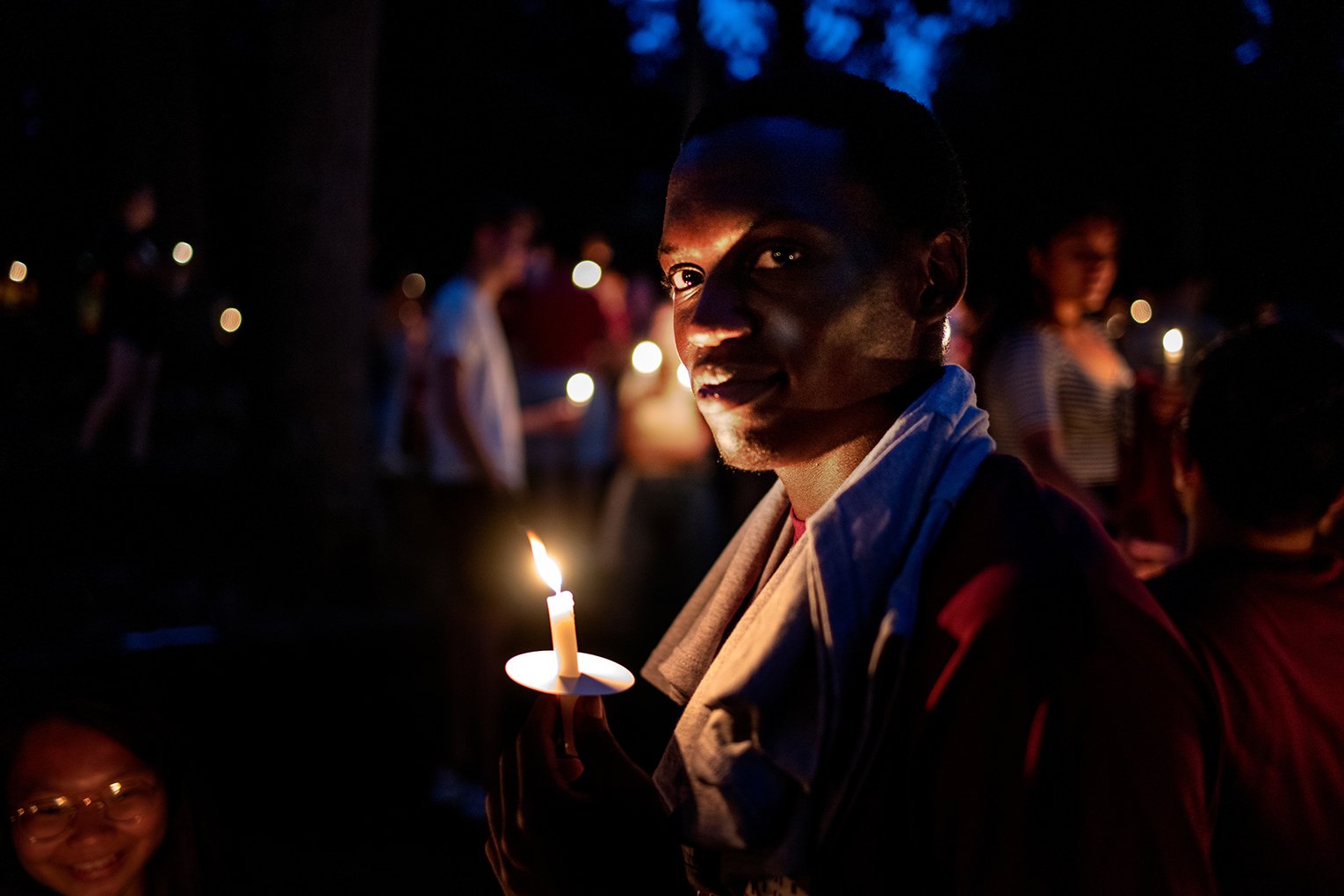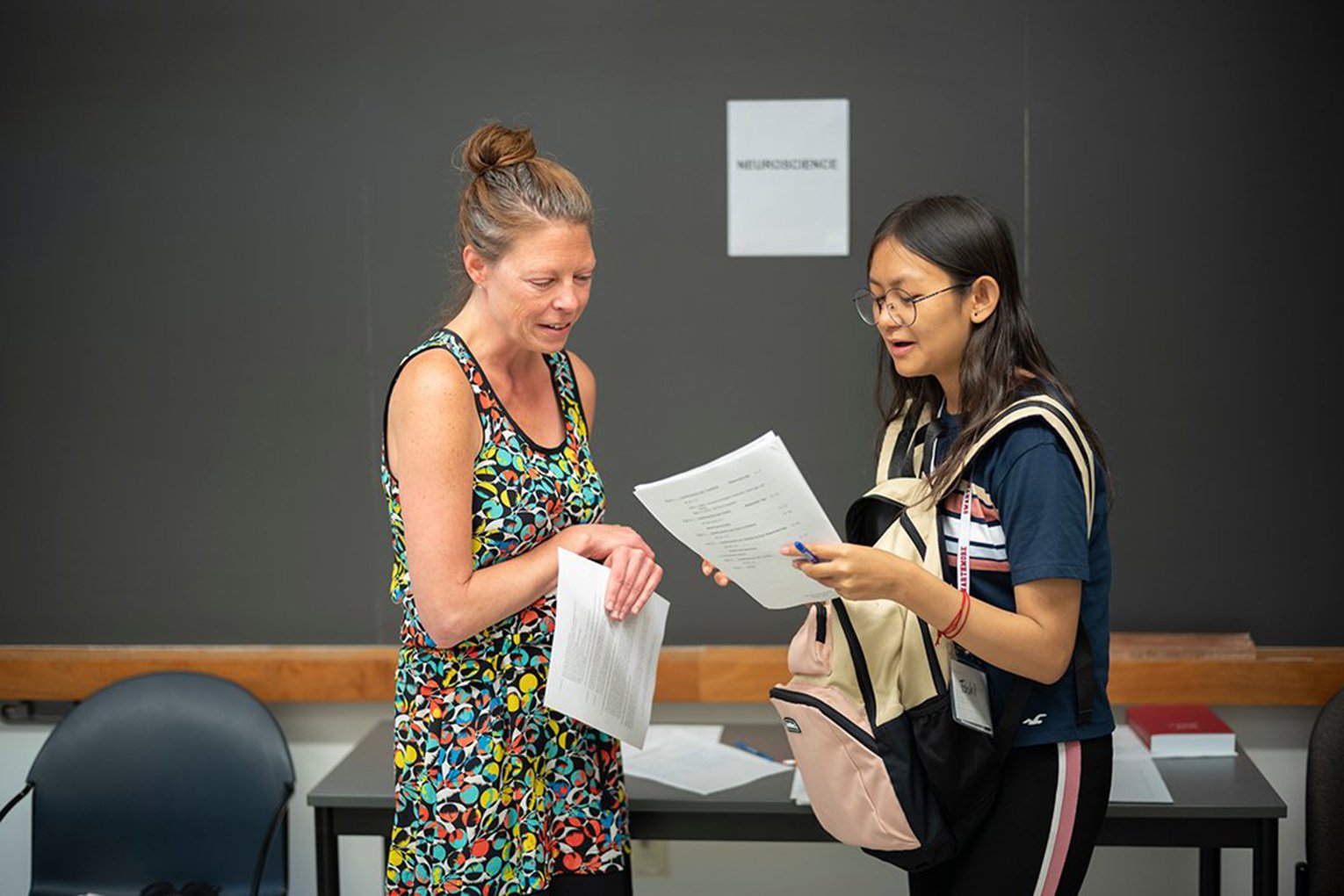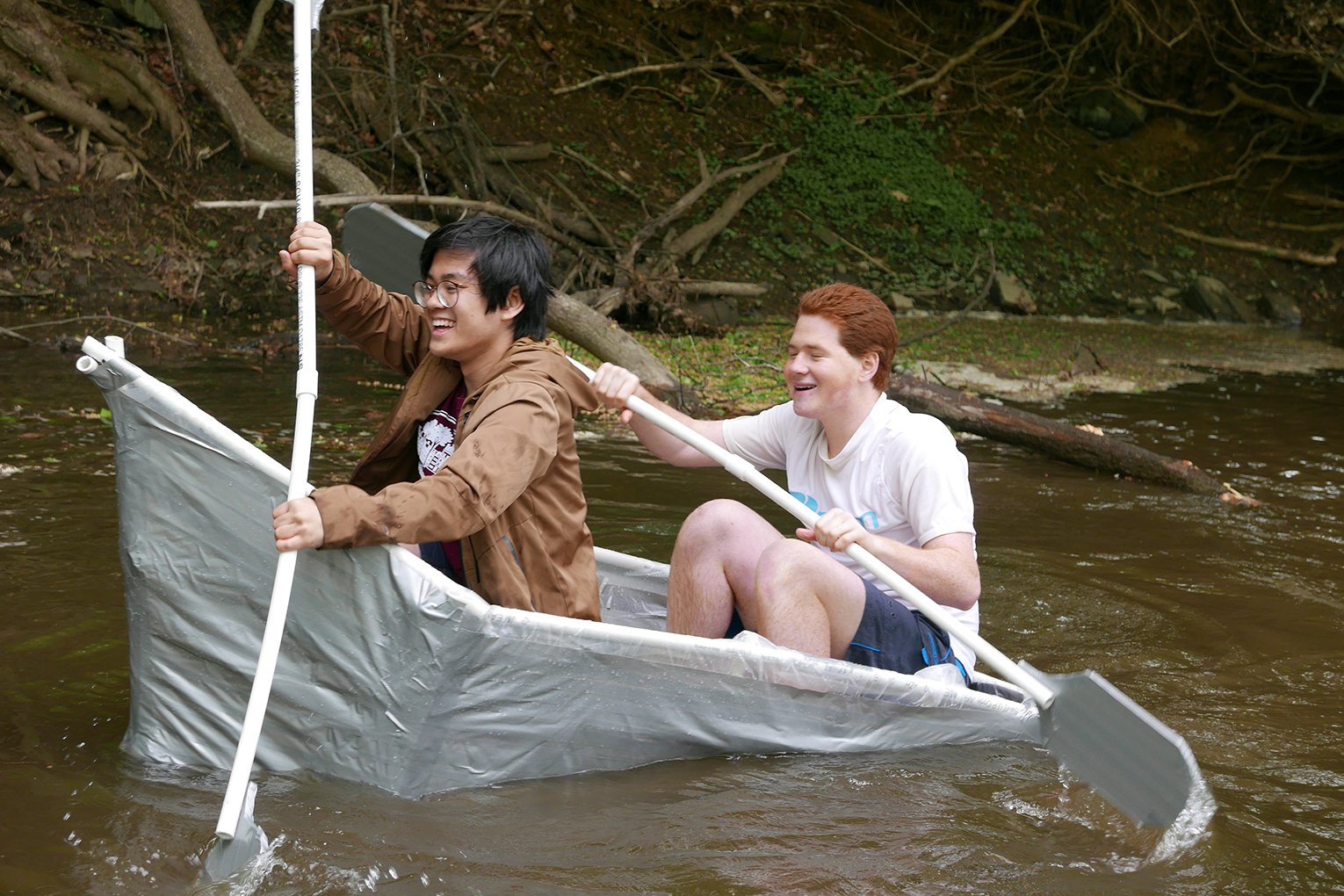Promoting Public Health
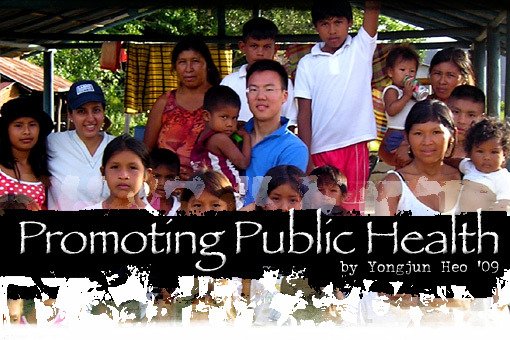

Yongjun Heo '09, a biology and public policy major from Newburgh, Ind., received funding from the Lang Center for Civic and Social Responsibility to spend last summer working in a medical clinic in a rural Venezuelan village. He is now planning a return trip under the auspices of Pemón Health, an organization he founded to address preventative medicine and health issues. Yongjun is also a member of the men's track and field team and regularly plays ice hockey with the Swarthmore Motherpuckers. Write to him at yheo@pemonhealth.org
 sat alone in an airport waiting for the airline attendant to call my name. I was the only one who would be flying a few hundred miles south of Ciudad Bolivar to Urimán, a small village on the outskirts of the Amazon Rainforest in southern Venezuela. I would spend the next month working for Dr. Simon Sambrano, a man who runs a medical clinic for more than 3,000 people in the village. Before I left, I met a tour guide who spoke English. He reassured me that the flight would be safe and that I was fortunate enough to have a pilot who was capable of safely crash-landing the single-engine Cessna in which I would be traveling. He smiled as he showed me some pictures of a similar plane that my pilot had apparently crash-landed the year before. To say the least, his gesture of goodwill failed to assuage my fears.
sat alone in an airport waiting for the airline attendant to call my name. I was the only one who would be flying a few hundred miles south of Ciudad Bolivar to Urimán, a small village on the outskirts of the Amazon Rainforest in southern Venezuela. I would spend the next month working for Dr. Simon Sambrano, a man who runs a medical clinic for more than 3,000 people in the village. Before I left, I met a tour guide who spoke English. He reassured me that the flight would be safe and that I was fortunate enough to have a pilot who was capable of safely crash-landing the single-engine Cessna in which I would be traveling. He smiled as he showed me some pictures of a similar plane that my pilot had apparently crash-landed the year before. To say the least, his gesture of goodwill failed to assuage my fears.A few hours later I safely landed on a dirt runway, and the doctor, villagers, and mosquitoes gave me a hearty welcome. As I walked through the village I noticed that many people were openly staring at me. Dr. Sambrano told me that the Pemón people were very interested by my arrival because they rarely meet foreigners, and they have never seen an Asian person before. I wandered through the village, noting the long dirt roads that ran alongside the mud-brick, thatched roof homes. The ground was littered with discarded plastic containers and supplies that seemed to have been used for construction. As I passed the clay-dirt soccer field, Dr. Sambrano explained that the village, though always poor, had been suffering an economic crisis. Village commerce slowly ground to a halt after a local mine was shutdown a few years ago. With an average of eight children and no steady source of income, most families were unable to afford food.
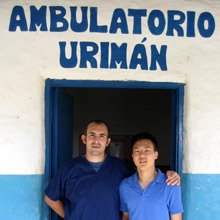
Dr. Simon Sambrano and Yongjun Heo '09 in front of the medical clinic in Urimán.
I entered the small examination room and noticed that it was only equipped with one bed and assorted antiseptics. I am not sure what I expected to see, but I was shocked at how bare the rooms were. In another room, I noticed a desk covered in plastic with piles of paper on top of it. Dr. Sambrano explained that the desk also doubles as a table used for stitching. In the back of the ambulatory, I noticed a number of patients lying in hammocks with intravenous catheters attached to their dangling arms. The doctor explained to me that every day new patients with malaria arrive at the ambulatory.
Dr. Sambrano is the only person trained in Western medicine in the village, and has been living in Urimán for a year. Ever since his arrival, he has worked 12 to 15 hours seven days a week. He treats an average of 50 to 60 patients every day, giving him little time to do anything else. It was not uncommon for him to skip meals in order to attend to patients. Along with his demanding work as the only doctor in Urimán, he also acts as a cook, janitor, carpenter, secretary, and community leader. I am still amazed by the amount of work that he has done in order to keep his clinic-and the village-up and running. Meeting an individual who has invested so much of his time and energy for the betterment of a community in crisis was inspiring. I have never met anyone like him before. He had a degree of responsibility that I could not imagine having myself; the lives of all the villagers depend upon his medical expertise and care.
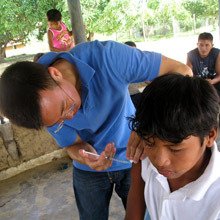
Yongjun learned how to administer vaccines soon after his arrival.
For the next month, time passed quickly. After waking up at 7 a.m. every day to realize that a few mosquitoes had yet again penetrated my mosquito net, I examined overnight patients with Dr. Sambrano to make sure they were showing signs of improvement. Then I assisted him with incoming patients, whom he treated to the best of his ability given the limited amount of medicine available. At 9 a.m. we had breakfast cooked by Aunt Corimoto, one of the villagers who helped with the maintenance of the clinic. During the next few hours, I built new shelves for the pharmacy, organized patient care materials to expedite treatment of incoming patients, or worked on one of many other jobs to help the ambulatory run smoothly. If the number of patients arriving at the clinic slowed down, we sat down to have lunch at 2. If not, we grabbed something quick to eat and continued working. After the meal, Dr. Sambrano continued treating patients as I checked on those in the recovery stage. On a typical day the majority of patients arrived before sundown, but there were always a couple of late-night visits. Dr. Sambrano refused to set strict closing hours for the clinic because he thought that it would be unreasonable for him to refuse to treat a patient in need at any time, day or night. From 10 p.m. to midnight we would finally both take some time to rest and relax.
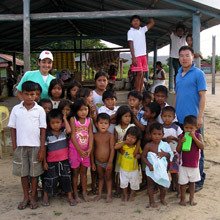
Children gather outside the clinic for the village's immunization day.
I soon realized that malaria was a very widespread disease in Urimán. It is common for a villager to be affected at least once each year. Malaria patients can hardly communicate as they lie still in their hammocks, and they seem to barely cling to life. After confirming the diagnoses through microscopy, we started the patients on medicines that would steadily kill off the parasite. Another disease the doctor and I treated was Leishmaniasis, a horrific-looking parasitic infection leading to the eruption of a skin sore resembling leprosy. Every time I realized that I was bitten by something, a mental, silent scream detonated within me. Becoming infected with the disease itself was not my only fear: the treatment of Leishmaniasis is a long-term process of receiving injections with 3-inch needle syringes into each side of one's backside, once daily, for more than a month.
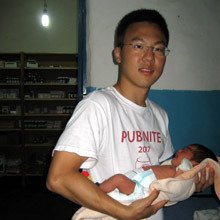
Yongjun and a baby he helped deliver during its one-week check-up.
Go to Page 2
